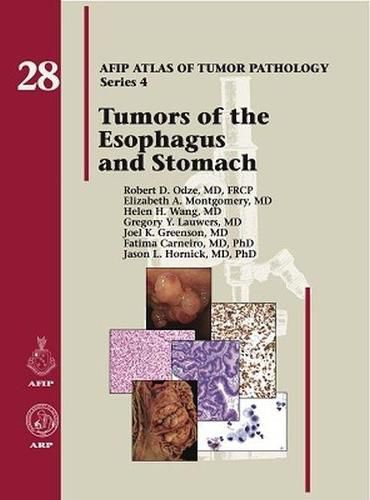Tumors of the Esophagus and Stomach
Robert D. Odze,Elizabeth A. Montgomery,Helen H. Wang,Gregory Y. Lauwers,Joel K. Greenson, M.D.

Tumors of the Esophagus and Stomach
Robert D. Odze,Elizabeth A. Montgomery,Helen H. Wang,Gregory Y. Lauwers,Joel K. Greenson, M.D.
Since the publication of the previous edition of Tumors of the Esophagus and Stomach, great advances in many areas of tumor biology have led to a better understanding of the pathogenesis, pathology, and molecular biology of epithelial and stromal malignancies of the upper gastrointestinal tract. Many of these advances have led to specific improvements in diagnosis, prognosis, treatment, and thus, survival in patients affected by these tumors. This edition of the Fascicle was written to highlight these advances, and more specifically, to help pathologists diagnose diseases more accurately and understand how pathology contributes to clinical treatment in the new age of personalized and targeted therapy.
Notable advances described in this publication include:
1) expansion of our understanding of the pathologic features and molecular pathogenesis of carcinomas of the esophagus and stomach, most of which develop through a chronic inflammation-metaplasia-dysplasia-carcinoma sequence. Important refinements in the classification of neoplastic precursor lesions have been made since the last AFIP series, including the morphologic and endoscopic subtypes, and this has led to improvements in surgical treatment with a strong trend toward minimization in the form of endoscopic mucosal and submucosal dissections 2) discovery of new diseases, such as gastric adenocarcinoma and proximal polyposis syndrome (GAPPS), a special variant of familial adenomatous polyposis, and significant advances in our knowledge regarding the molecular characterization of genetic polyposis syndromes 3) great expansion in the molecular-pathology correlation, morphologic diversity, classification, and therapeutic options of gastrointestinal stromal tumors (GISTs) 4) reclassification and refinement of prognostic factors related to neuroendocrine tumors 5) improvements in the role of cytology in the diagnosis of tumors of the upper gastrointestinal tract.
This book has been written with the pathologist in mind first by using tables that illustrate salient pathologic, molecular, and differential diagnostic features of key entities that are often difficult to distinguish from each other. Specific color photographs of classic tumors and morphologic variants often difficult to recognize are used throughout.
This item is not currently in-stock. It can be ordered online and is expected to ship in approx 4 weeks
Our stock data is updated periodically, and availability may change throughout the day for in-demand items. Please call the relevant shop for the most current stock information. Prices are subject to change without notice.
Sign in or become a Readings Member to add this title to a wishlist.


